







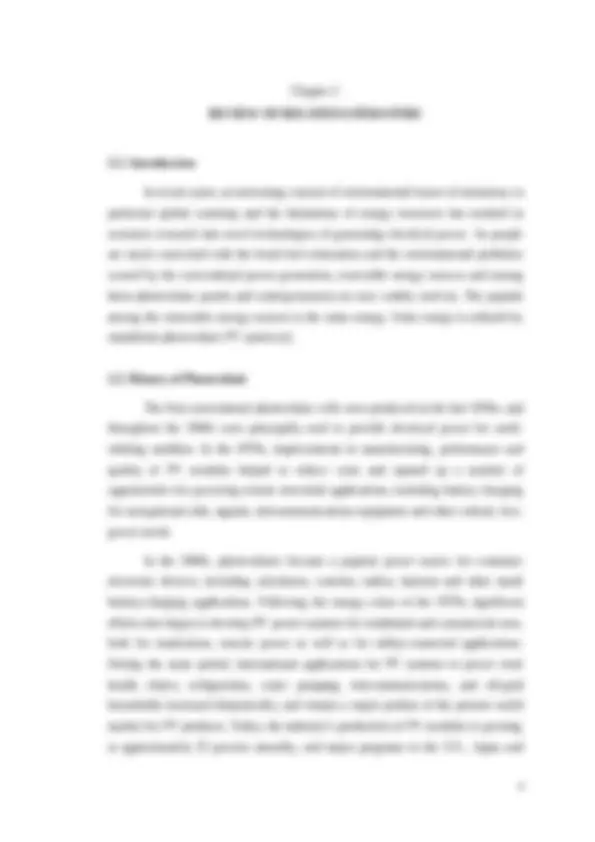
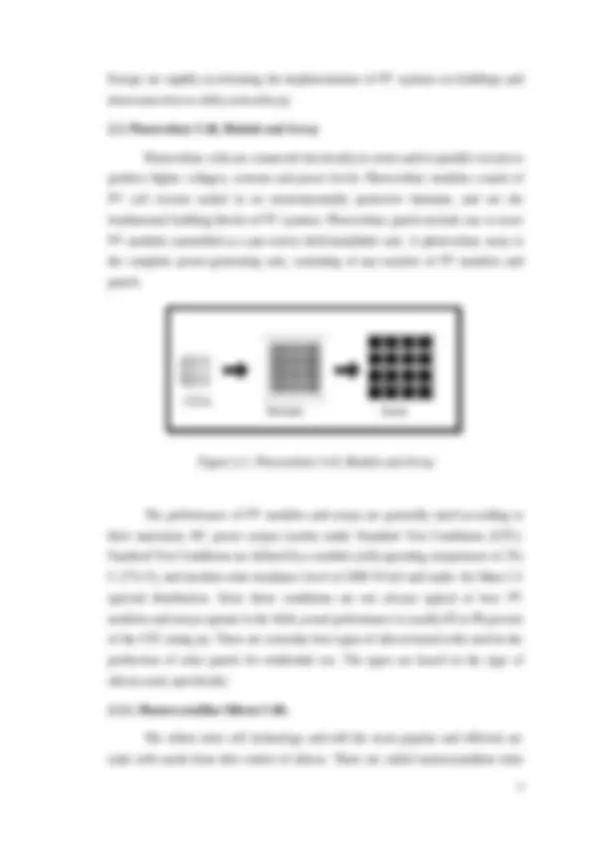

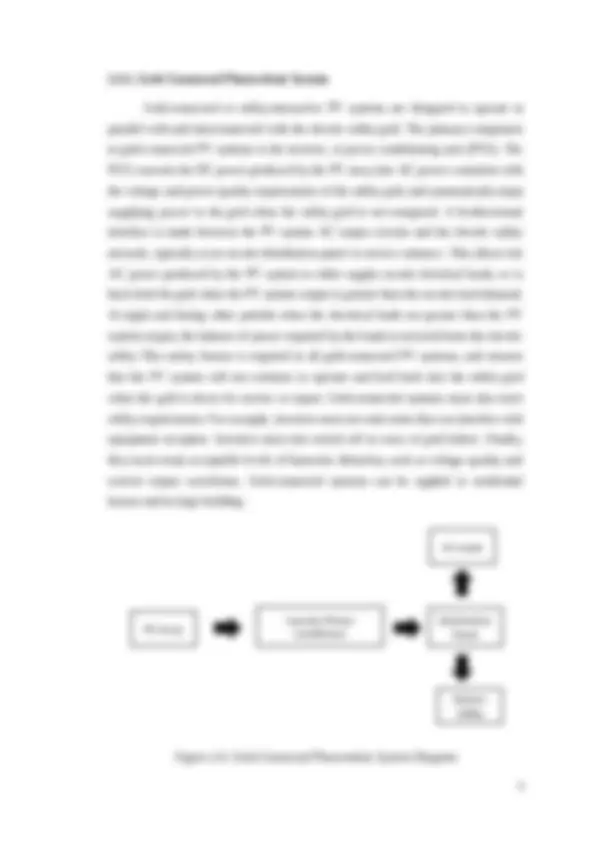

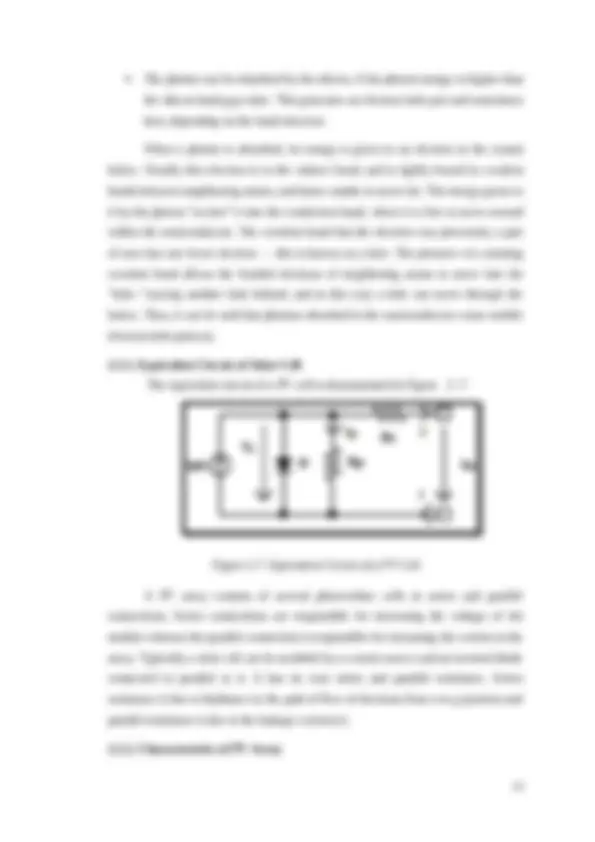
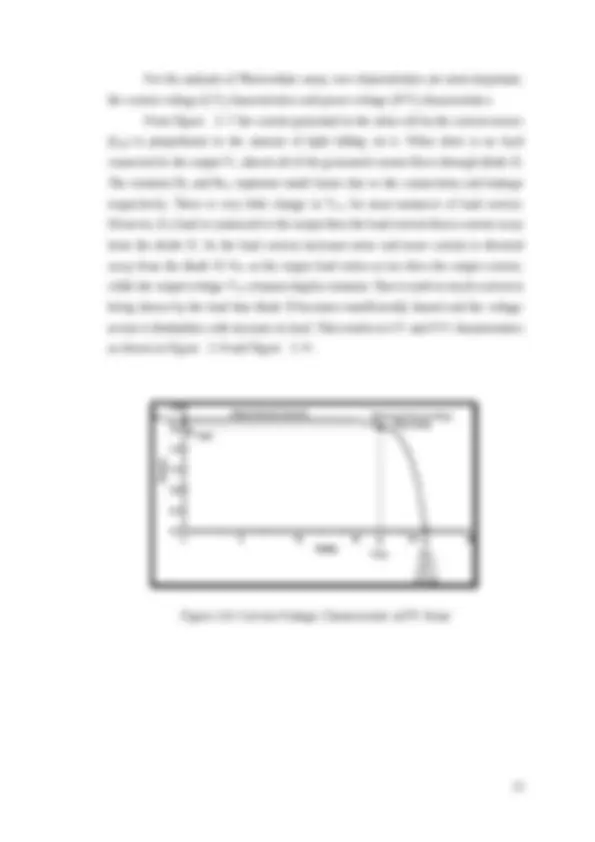
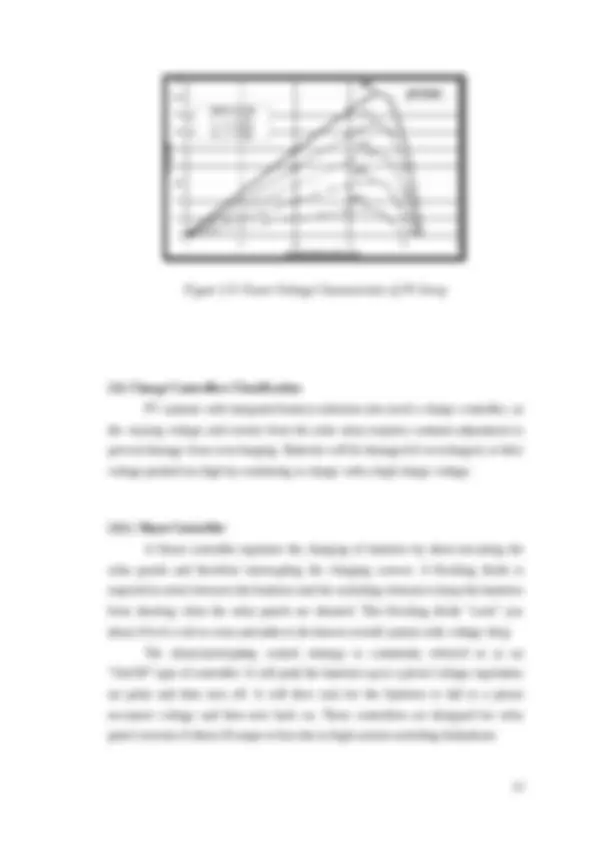
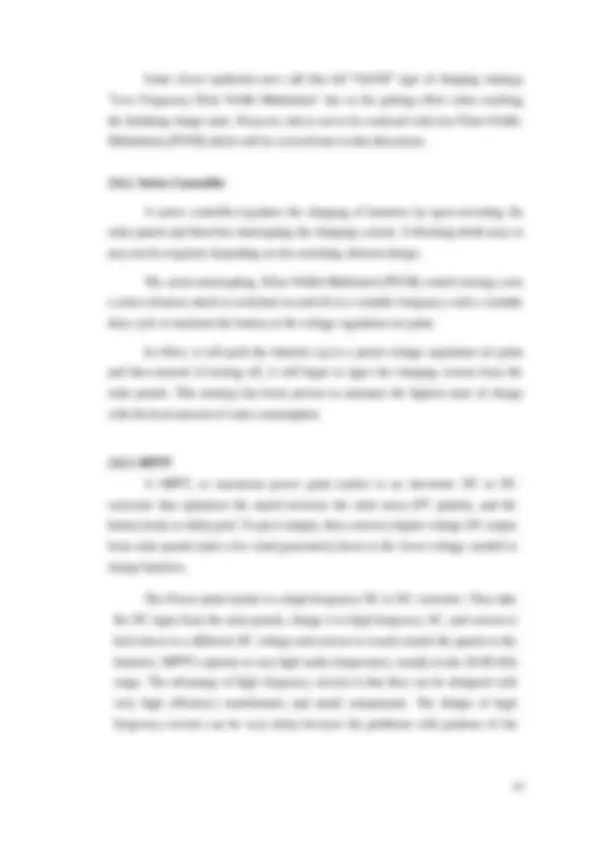
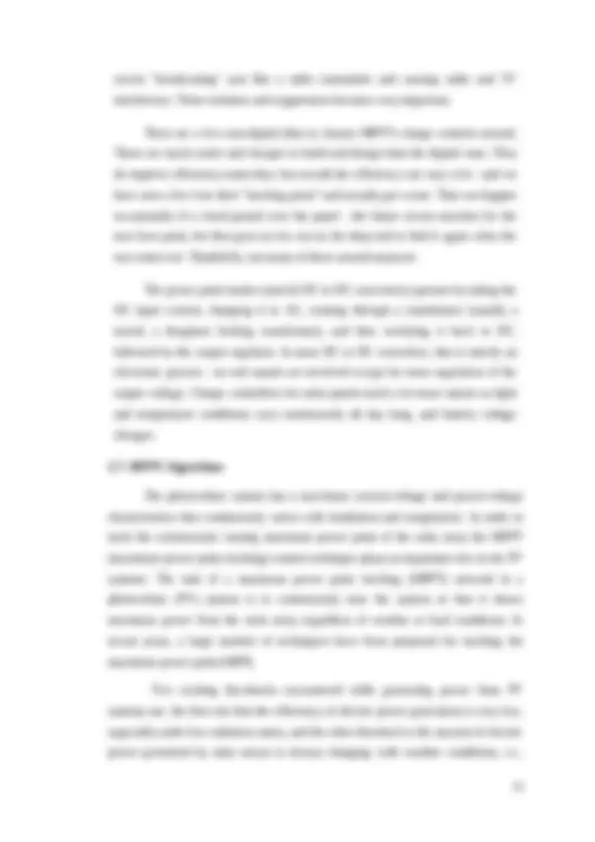
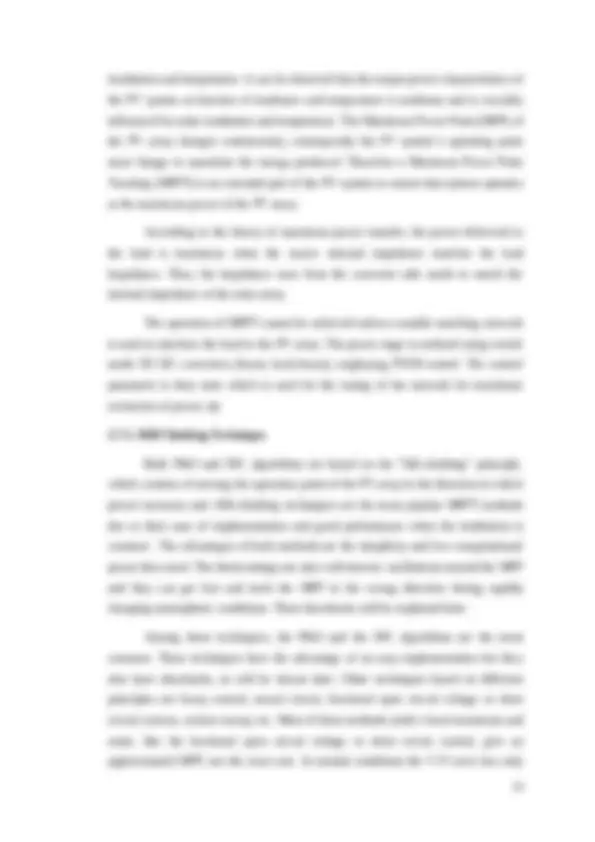



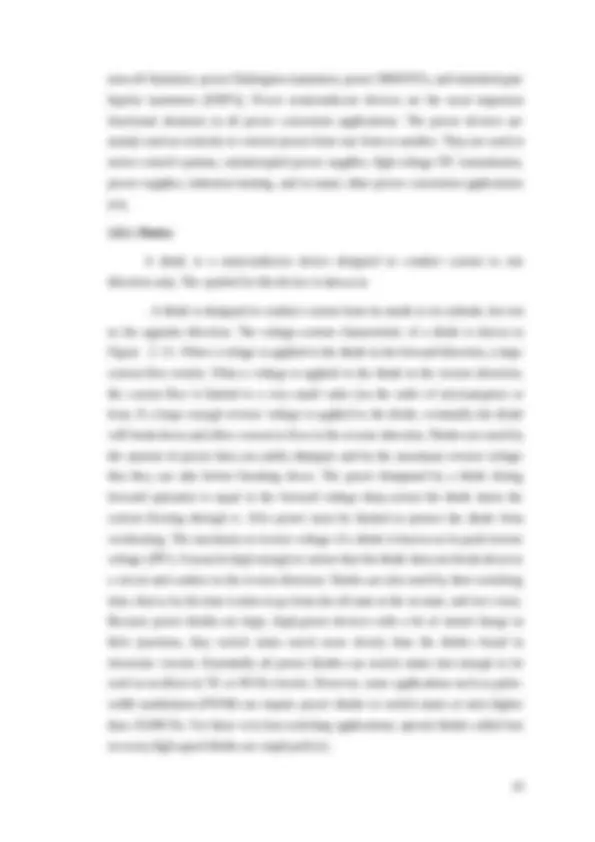
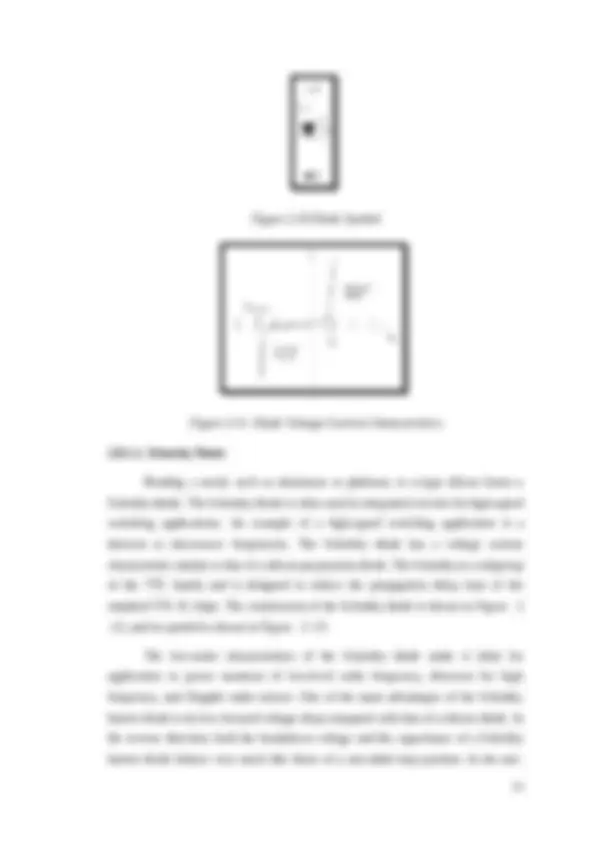
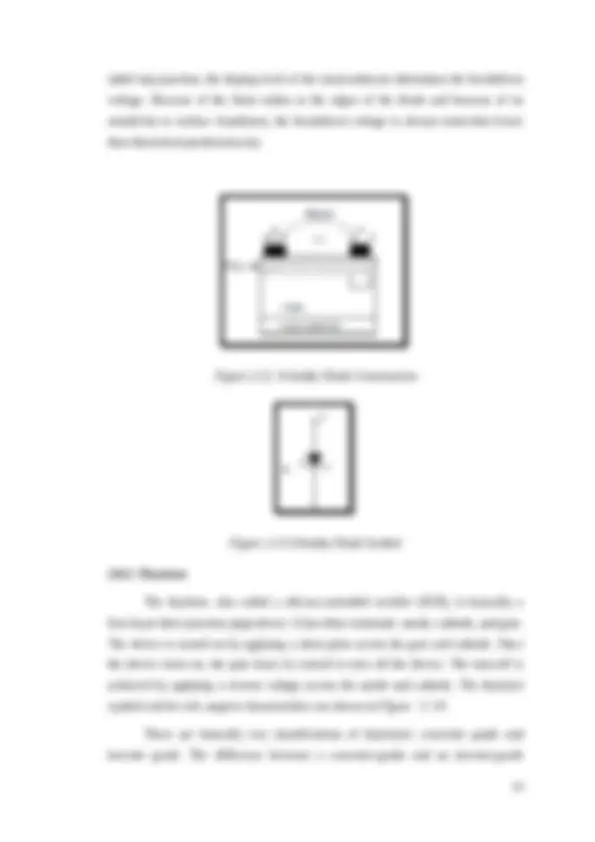
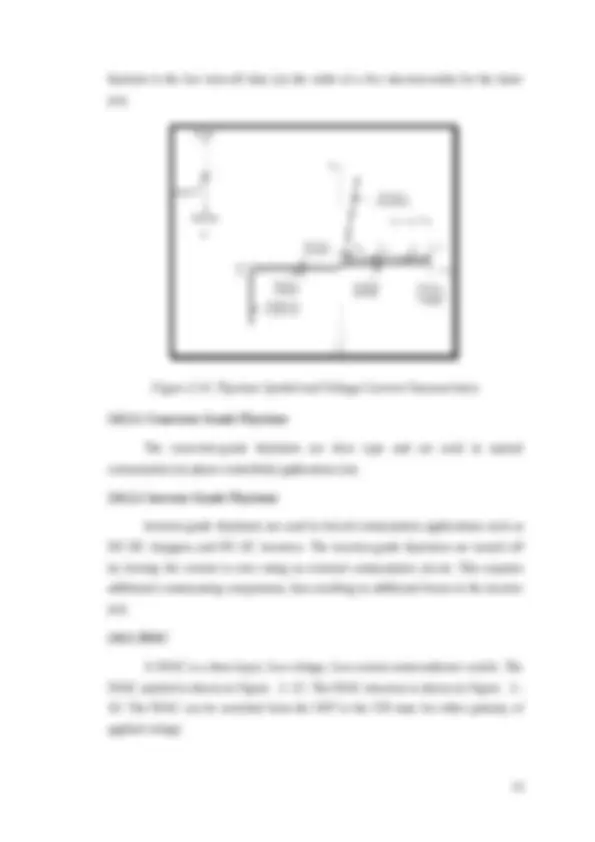
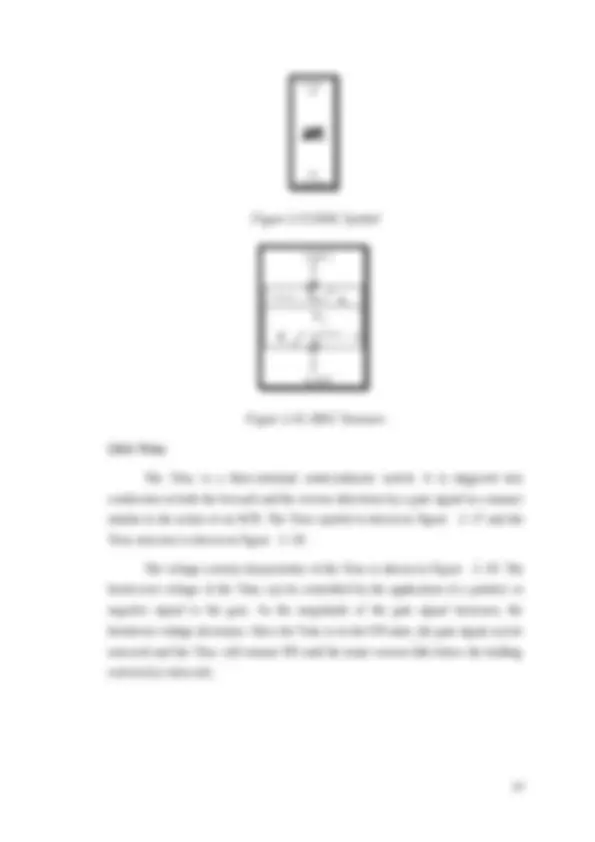
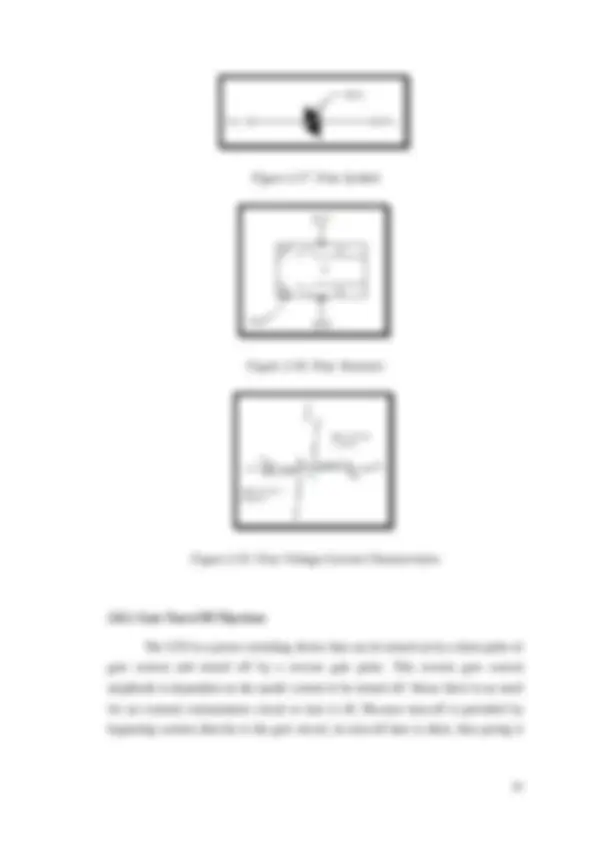

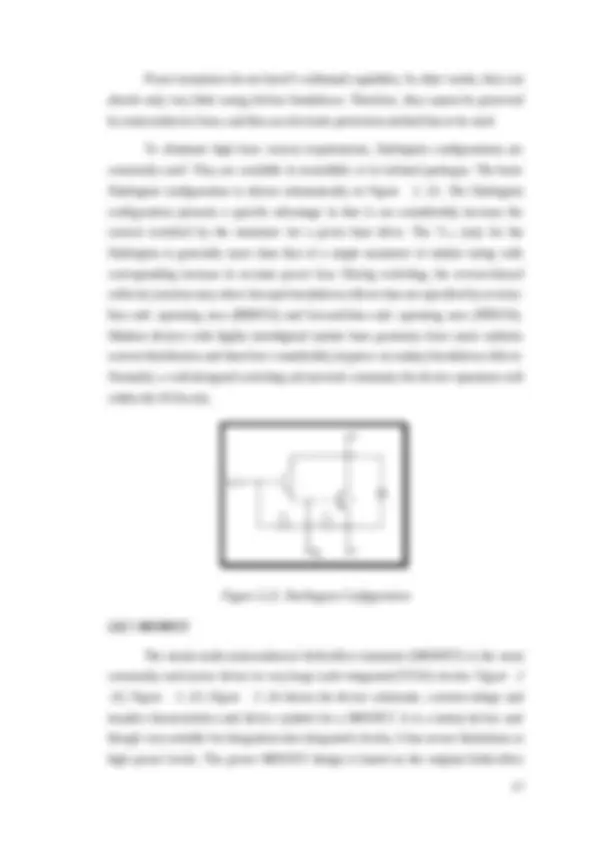
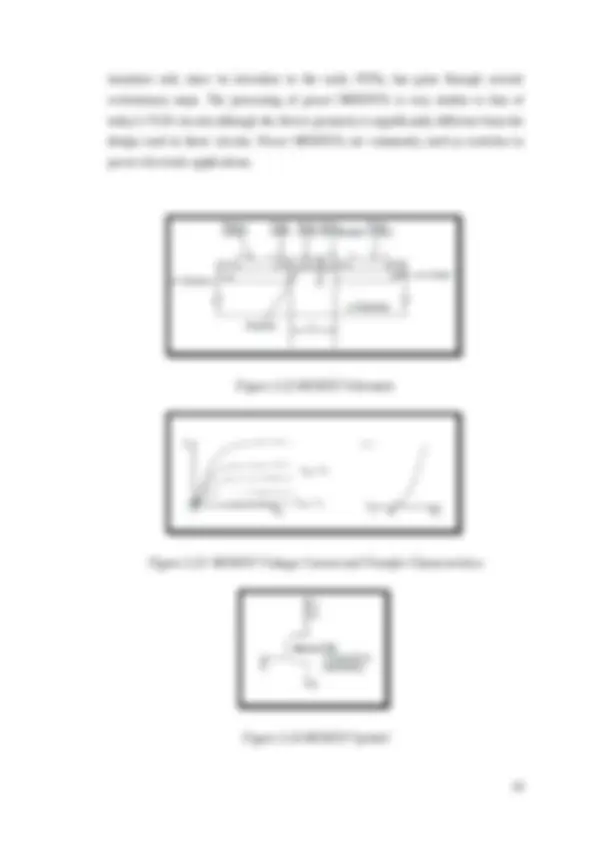



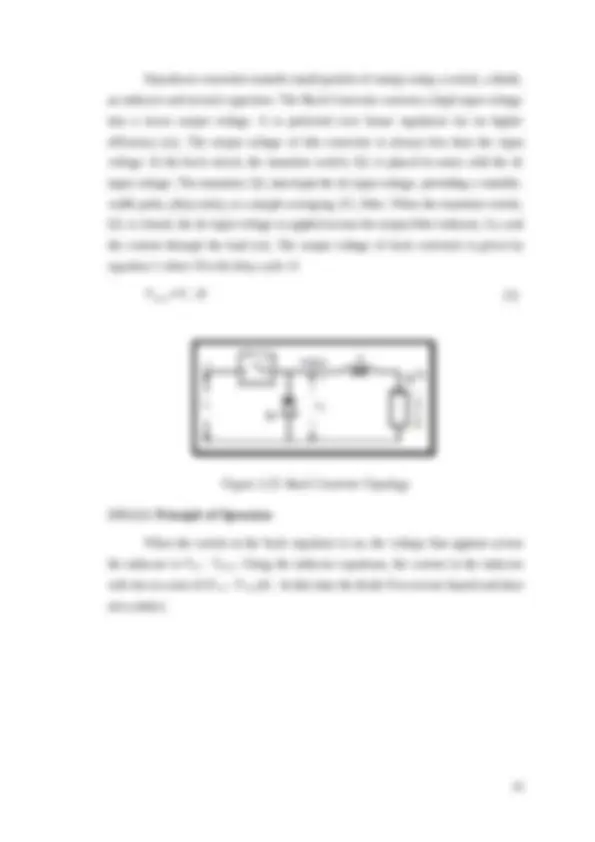
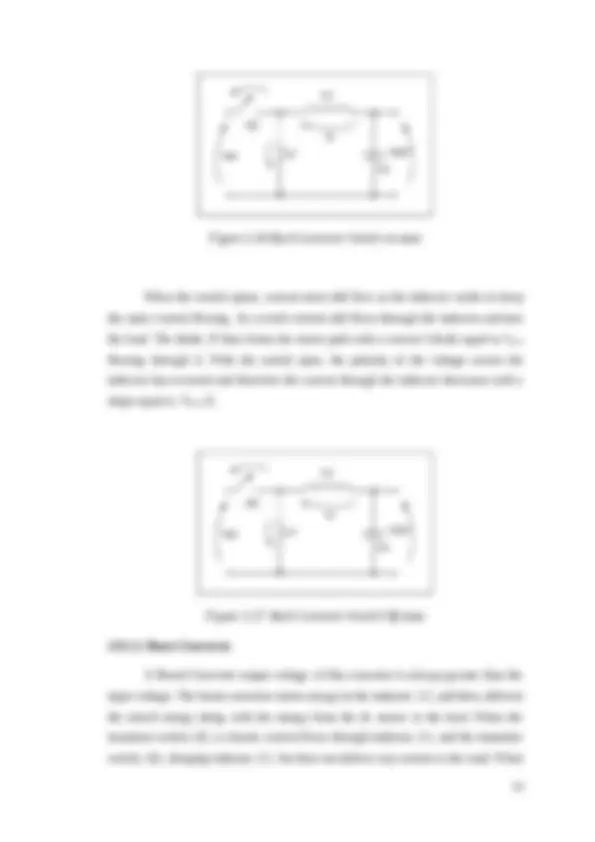
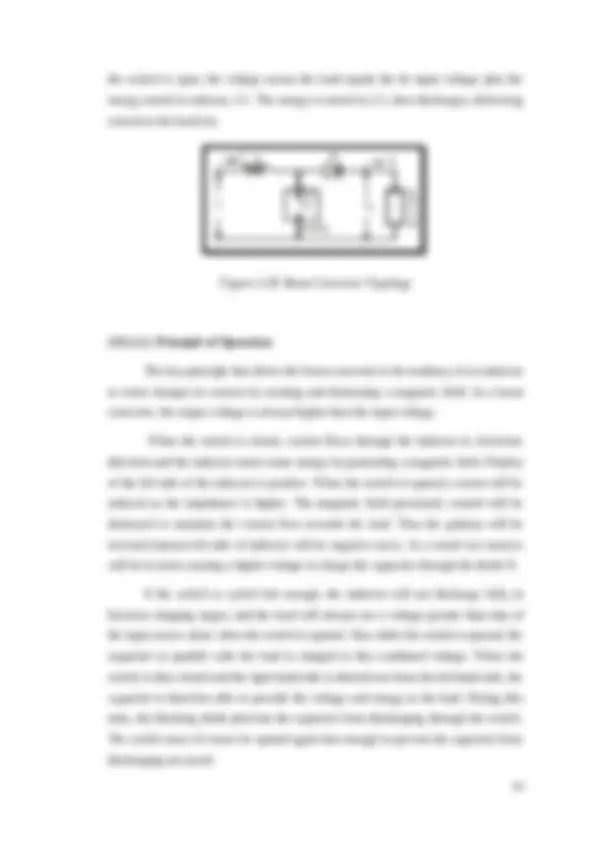
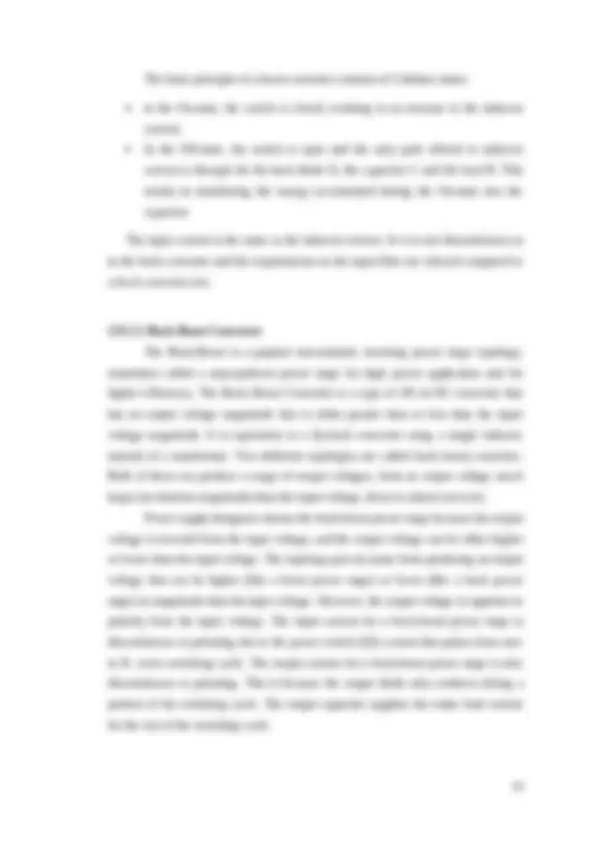
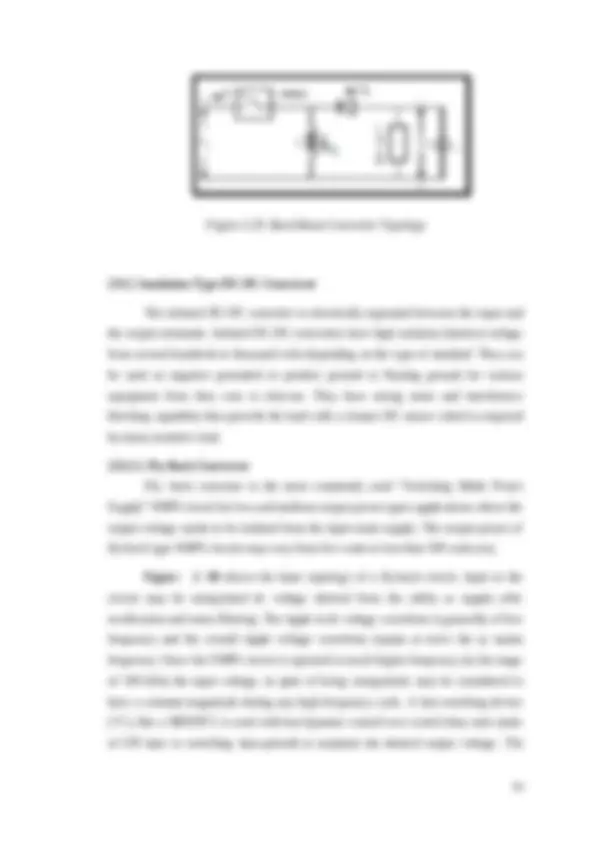
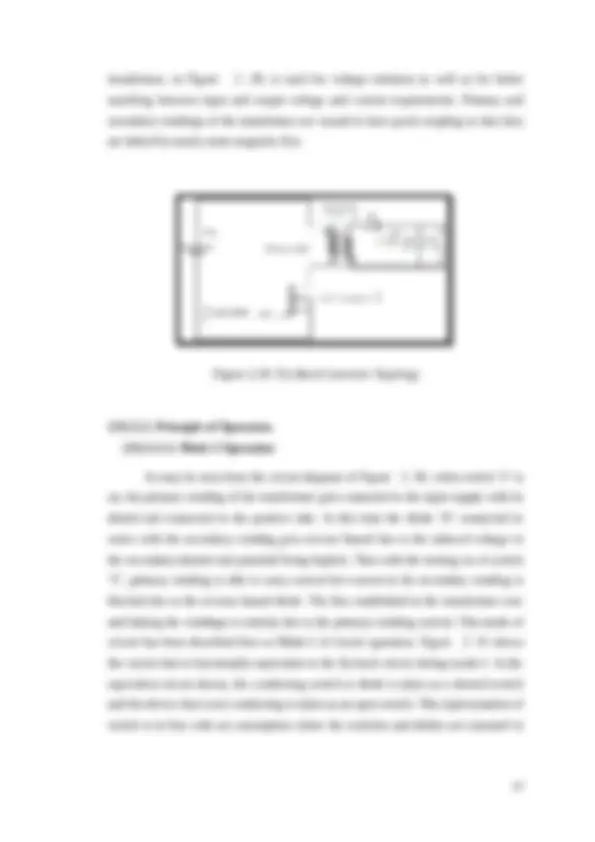
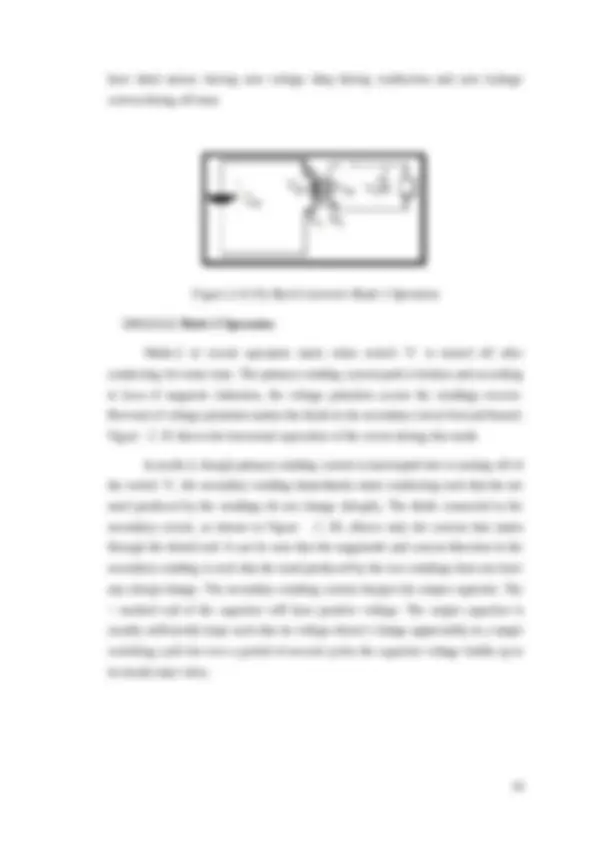
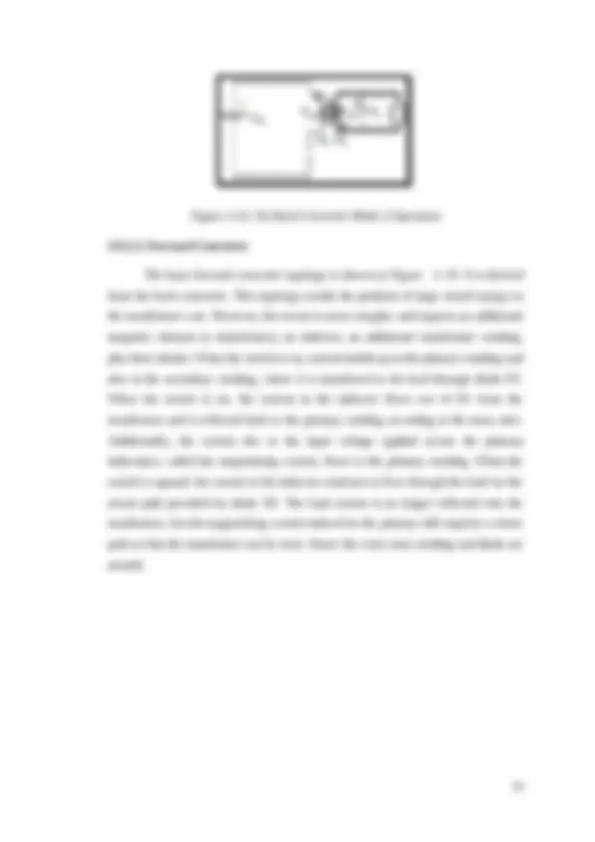
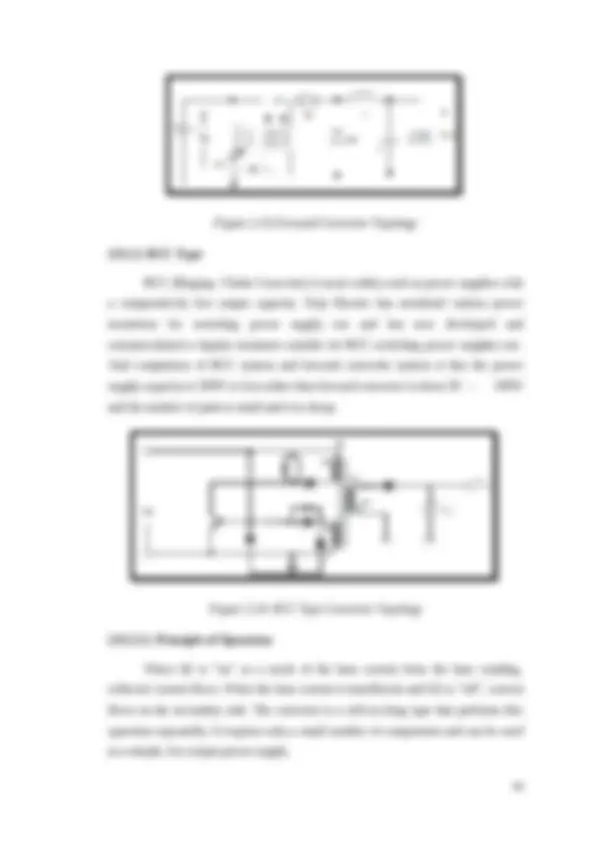
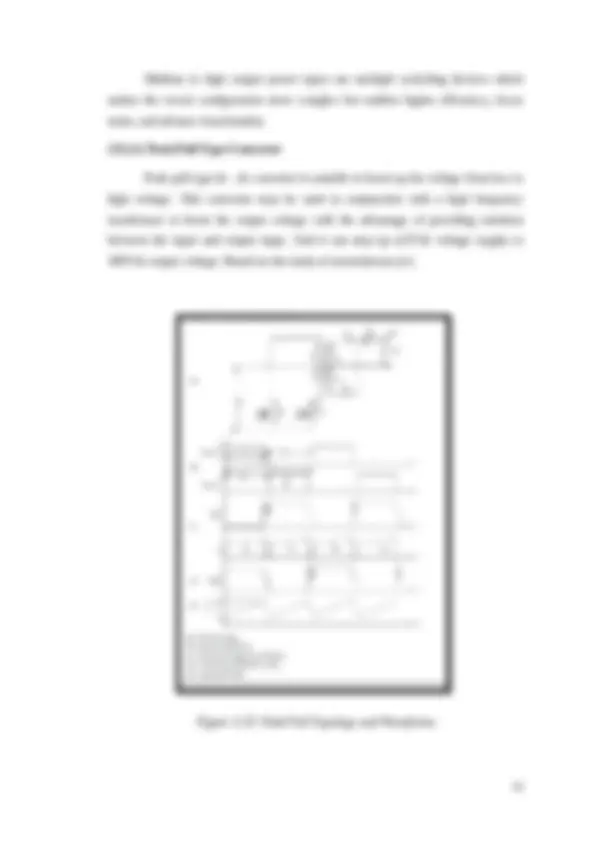
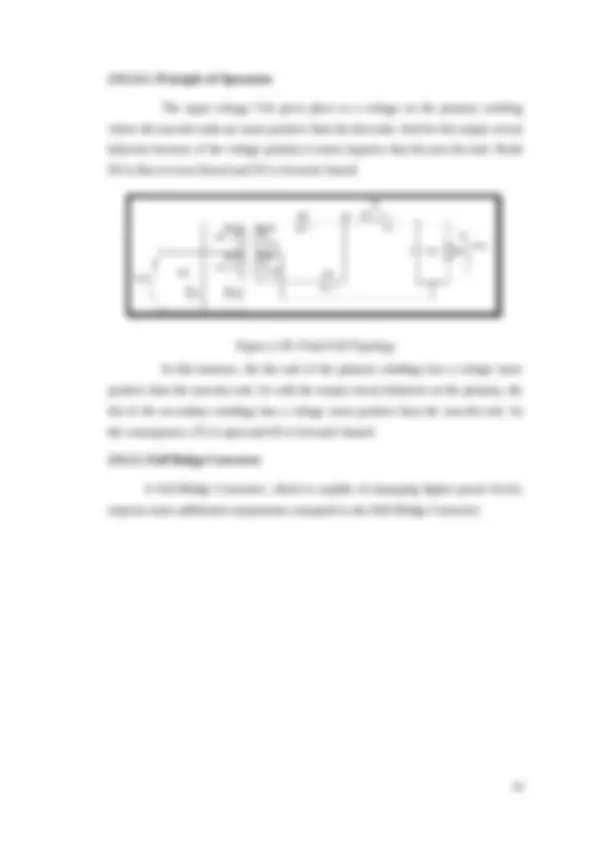
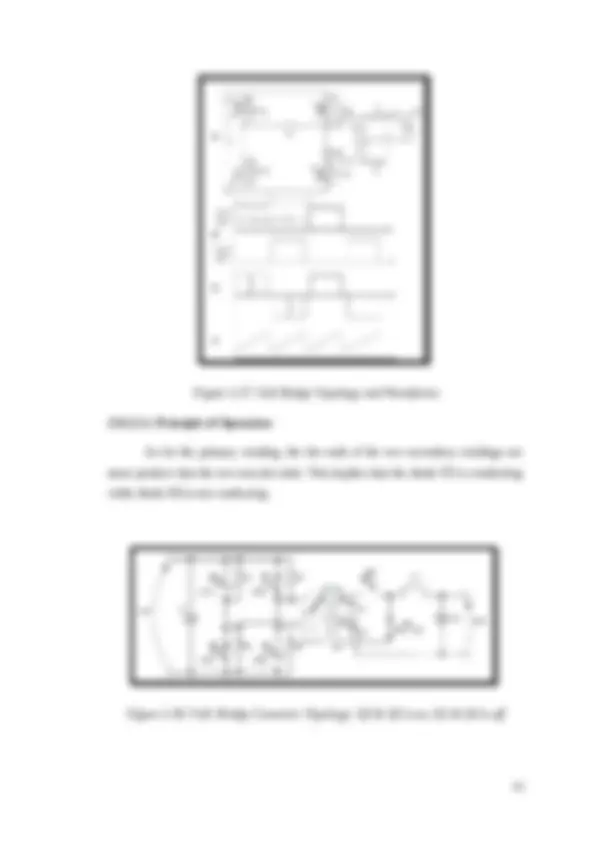
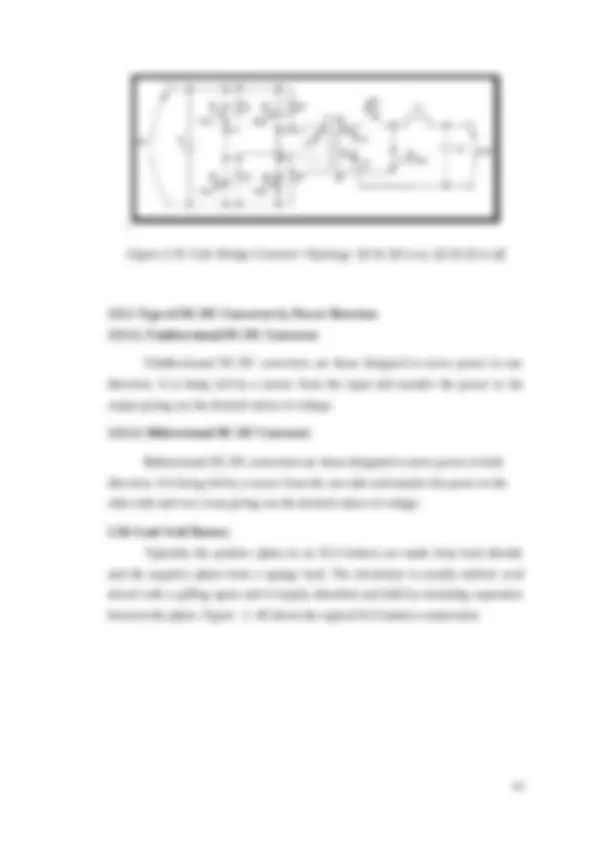
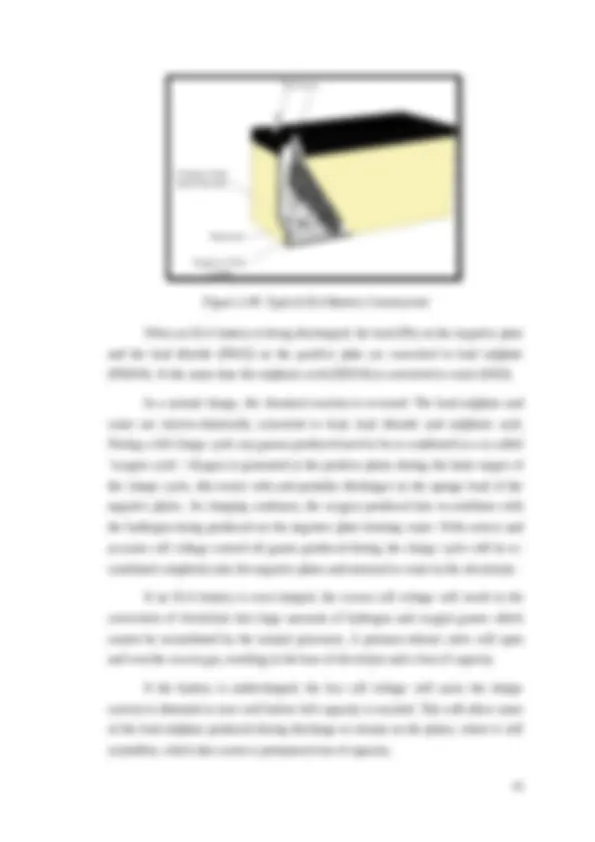

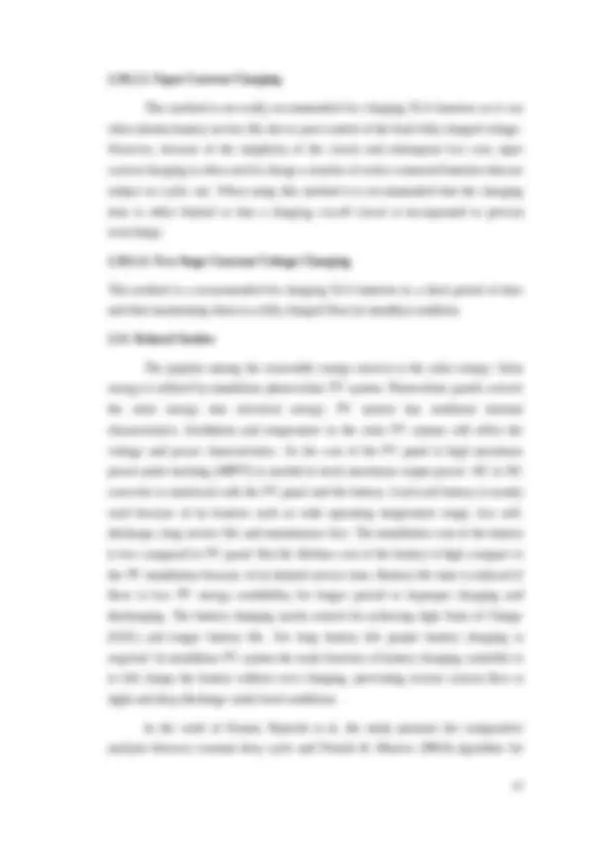

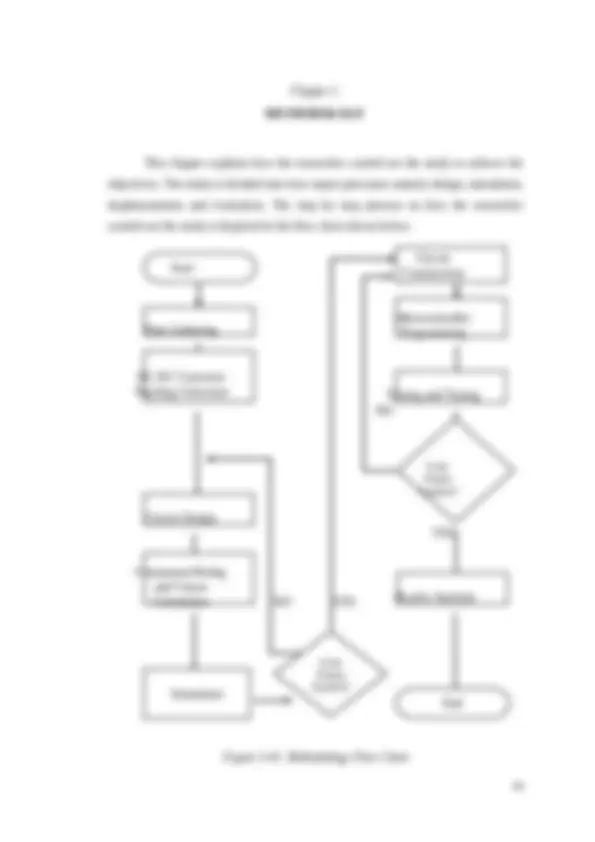

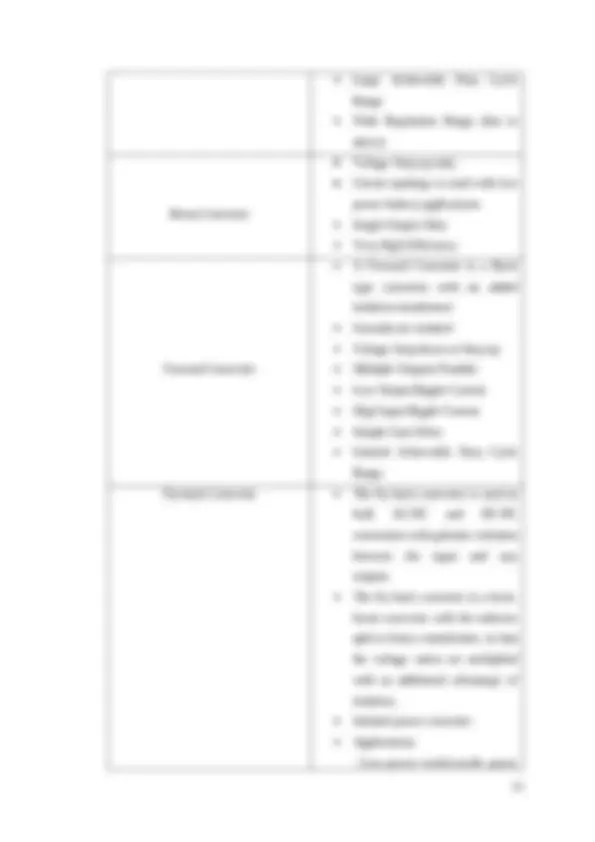



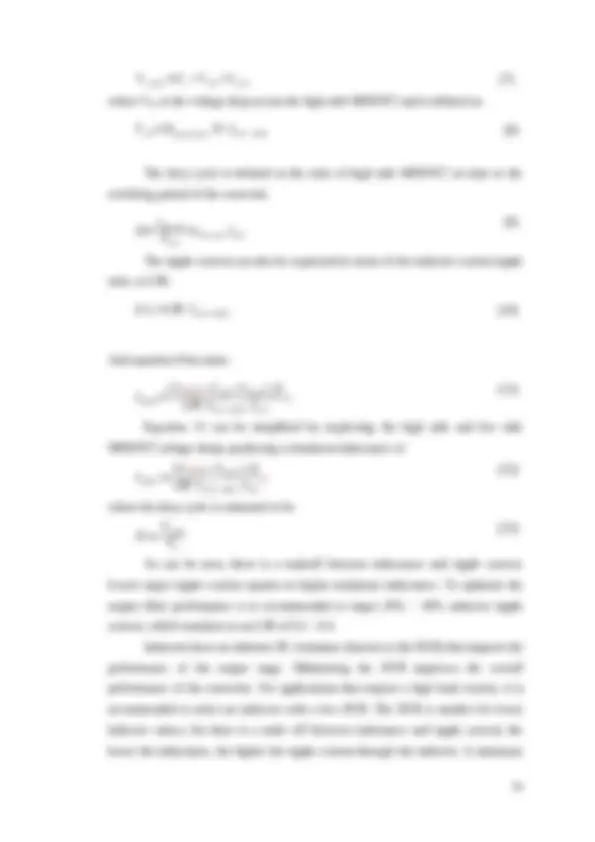

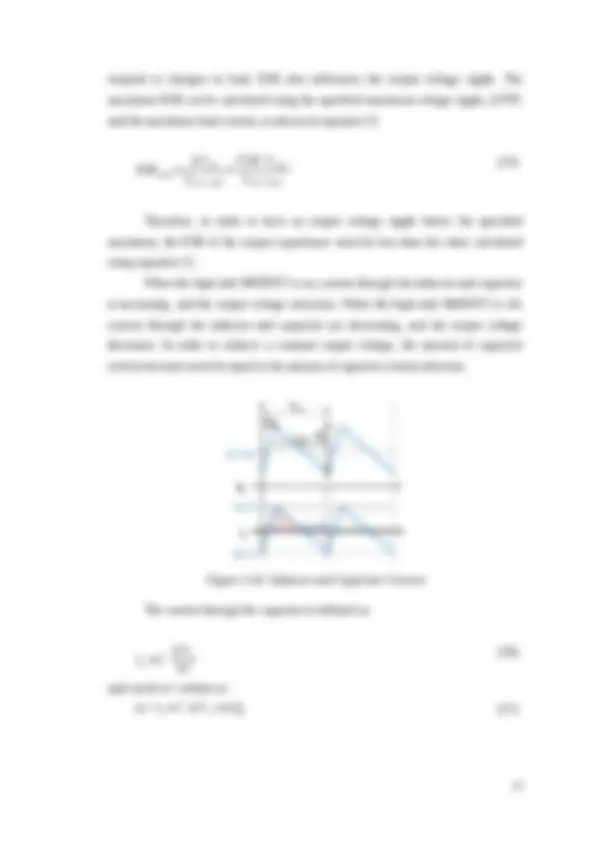
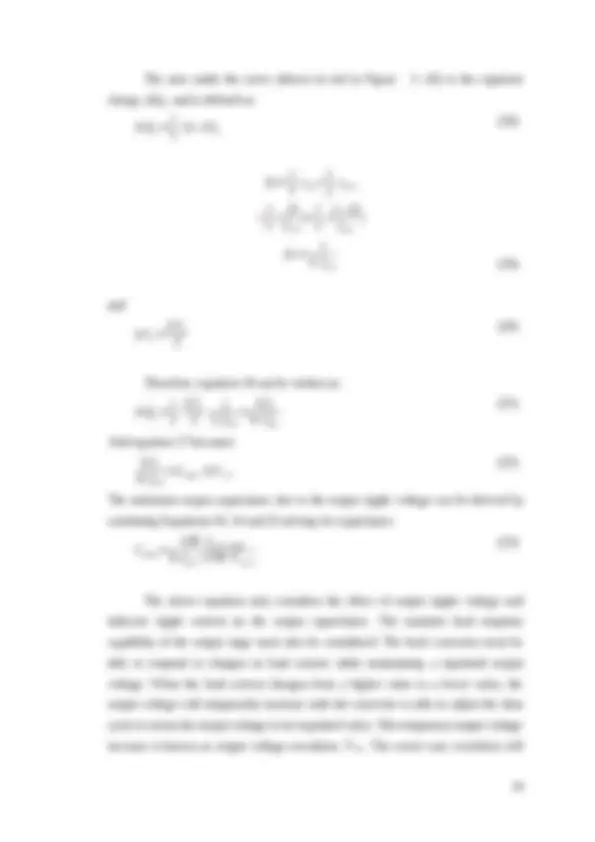
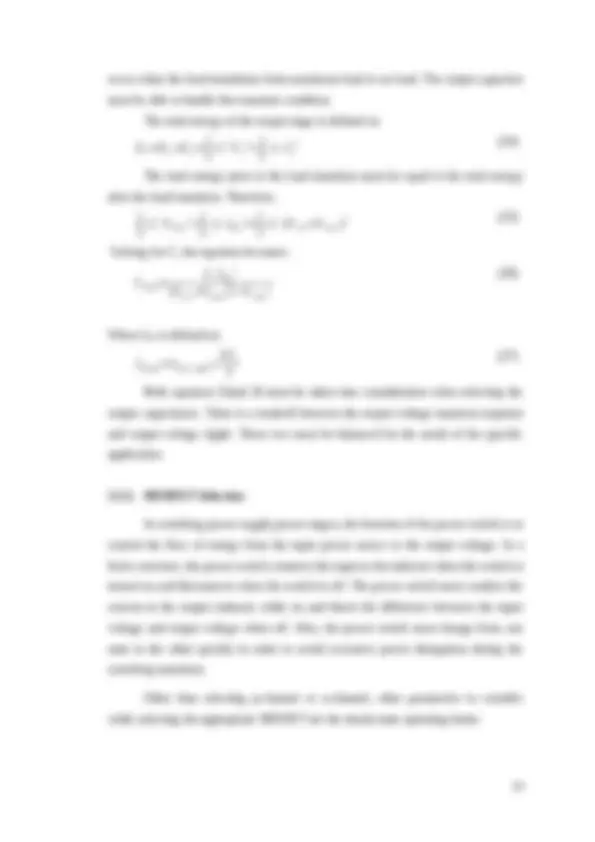
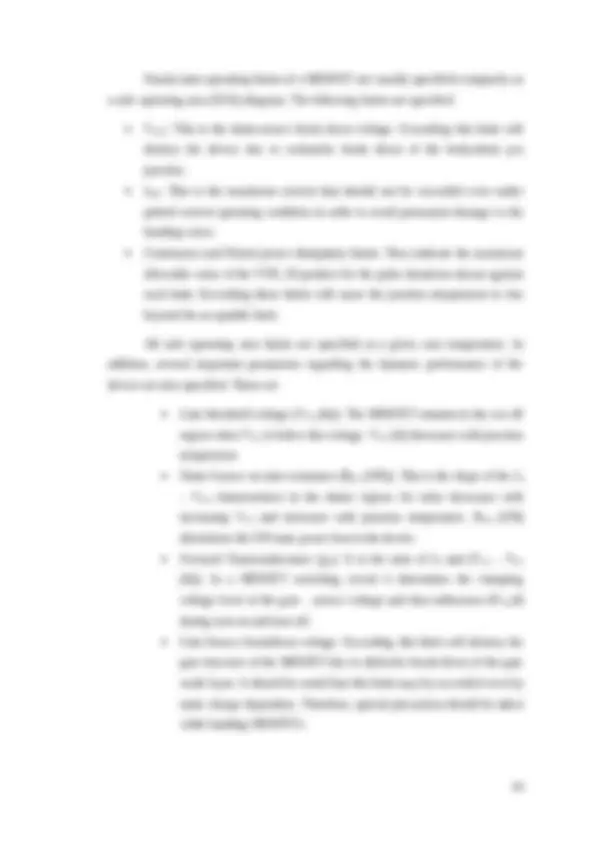
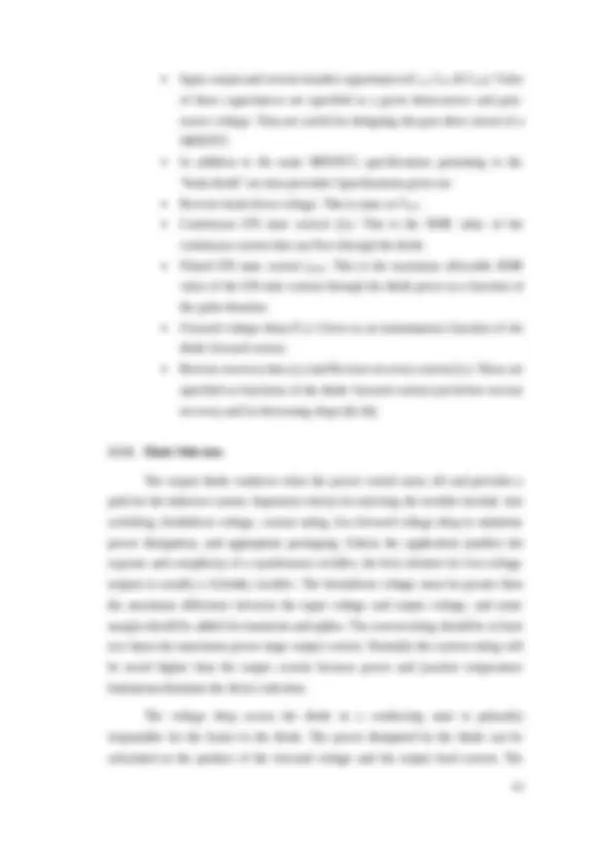



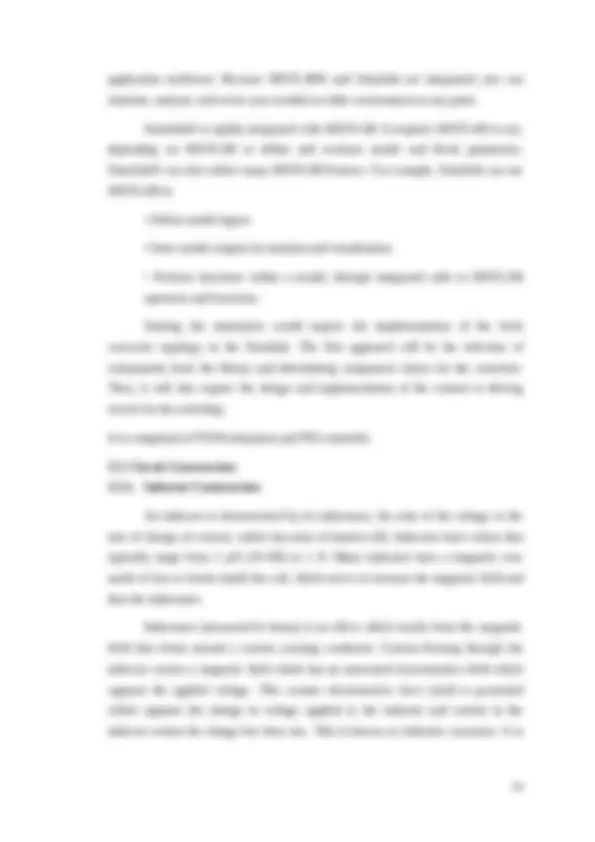
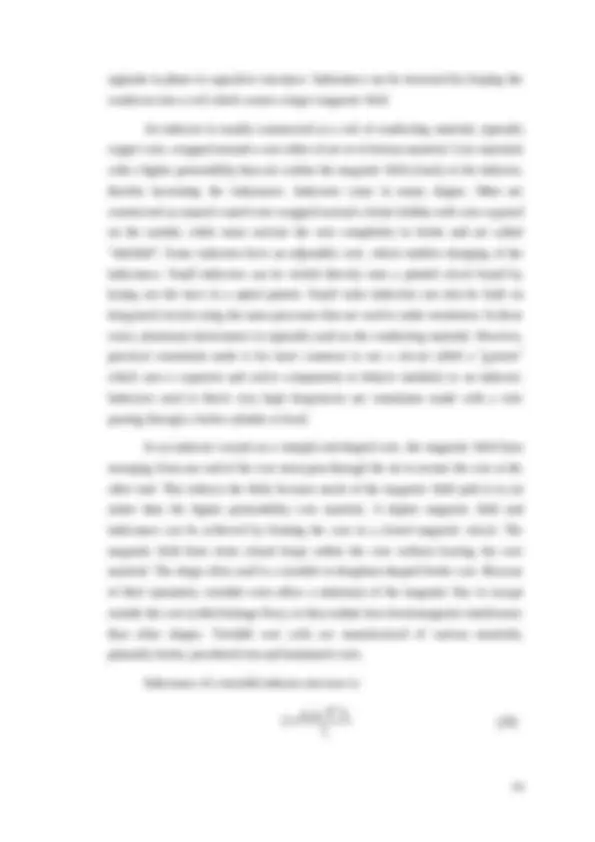

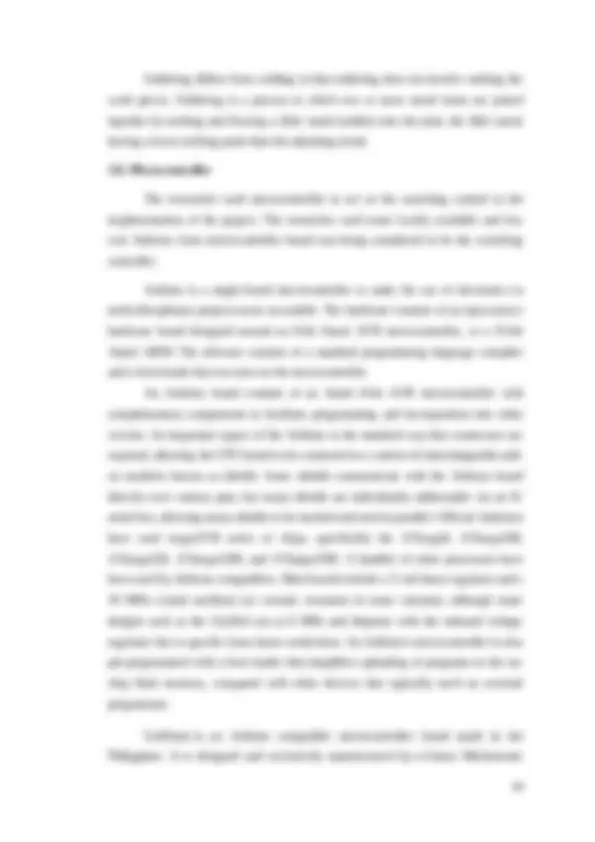

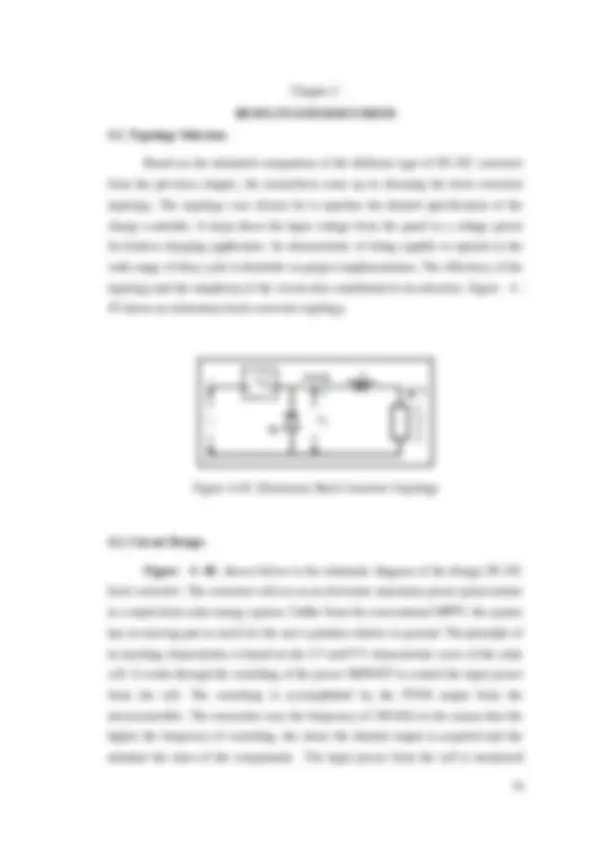

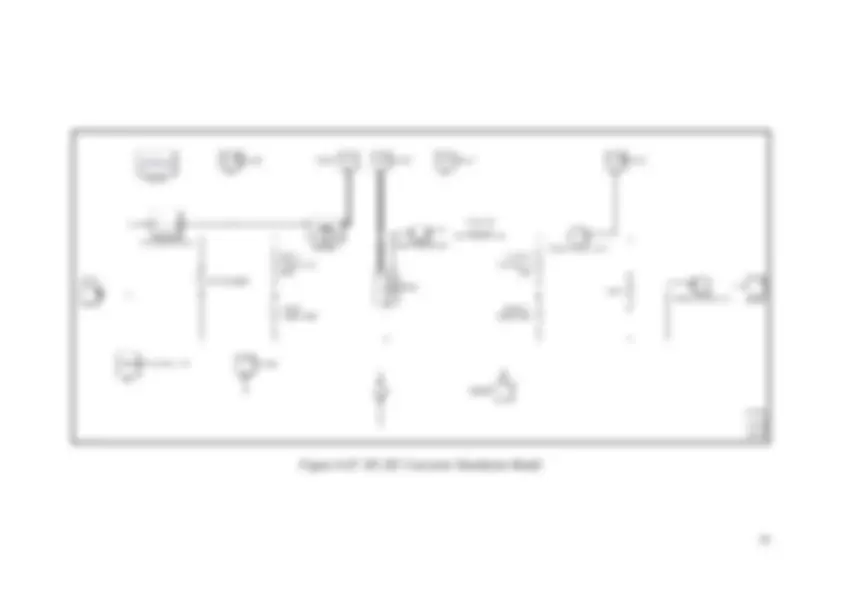
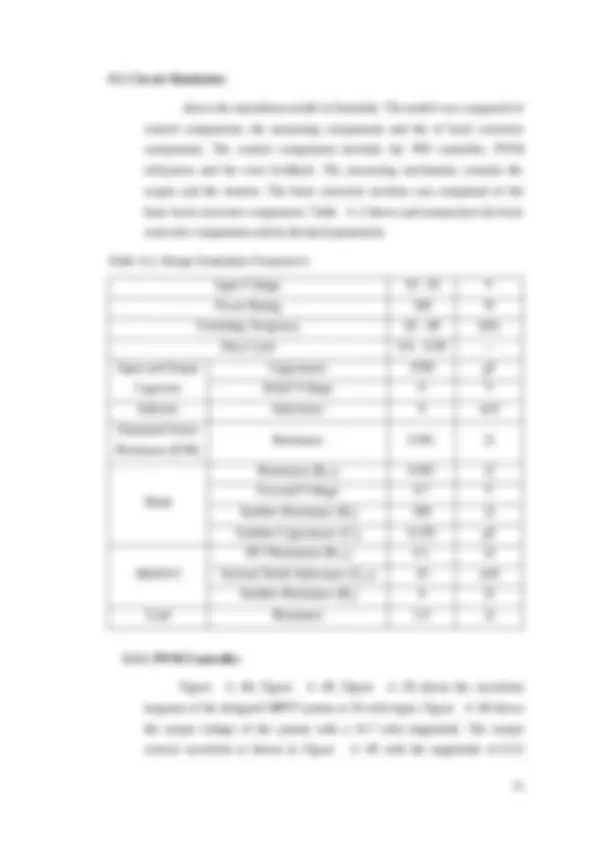
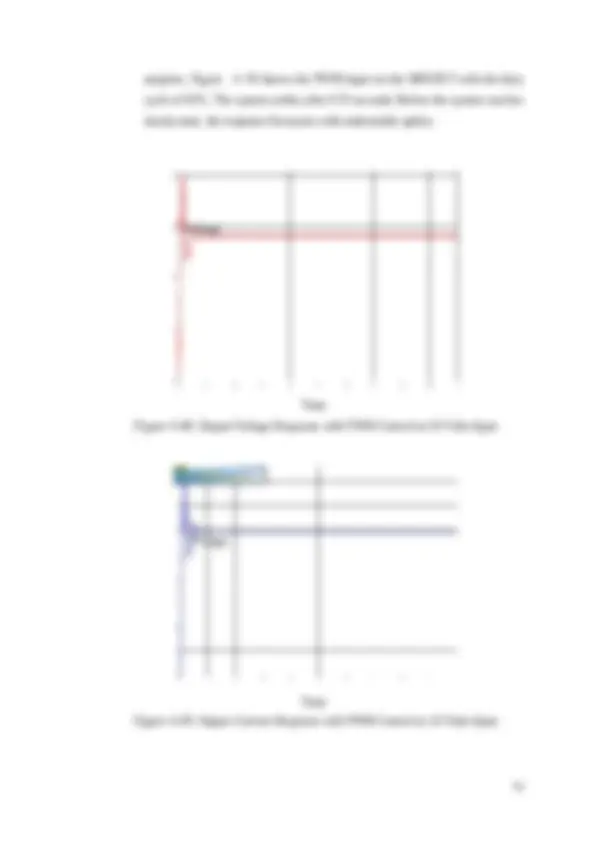
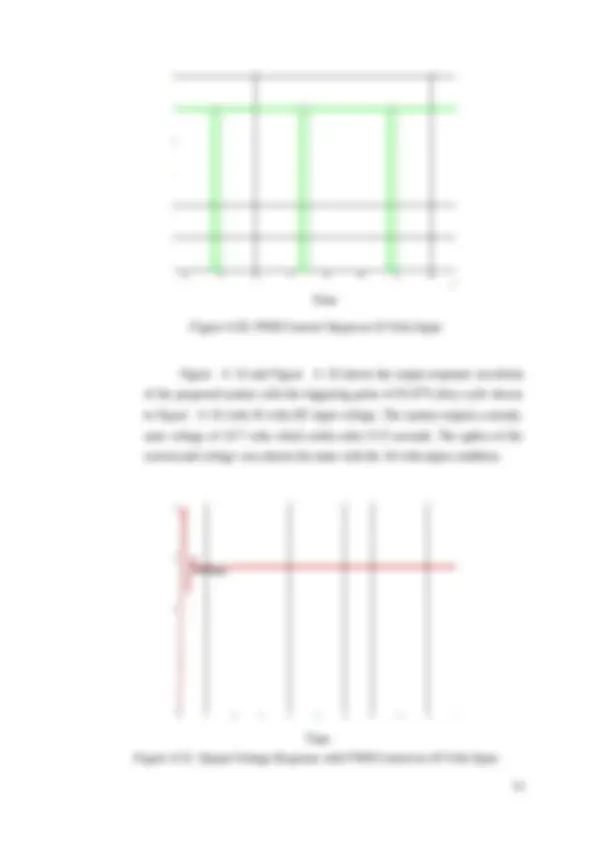
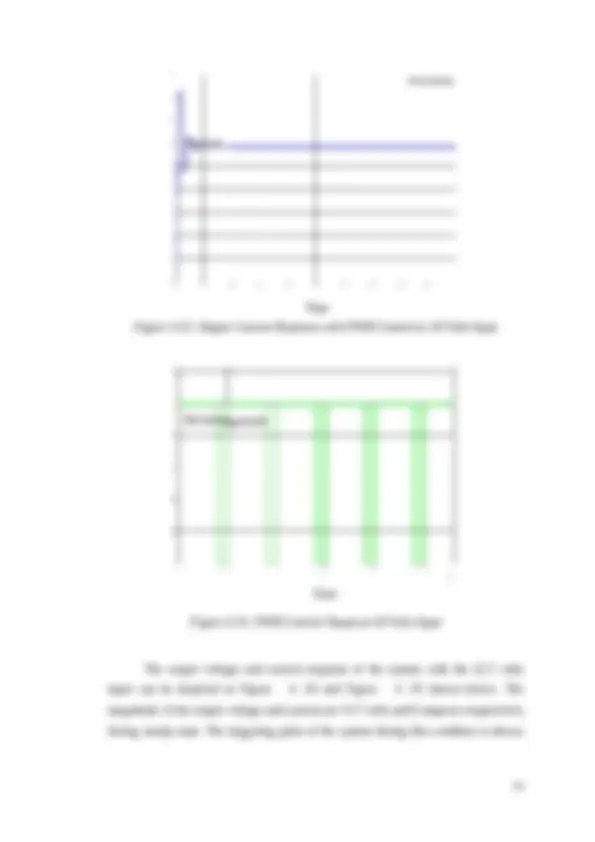
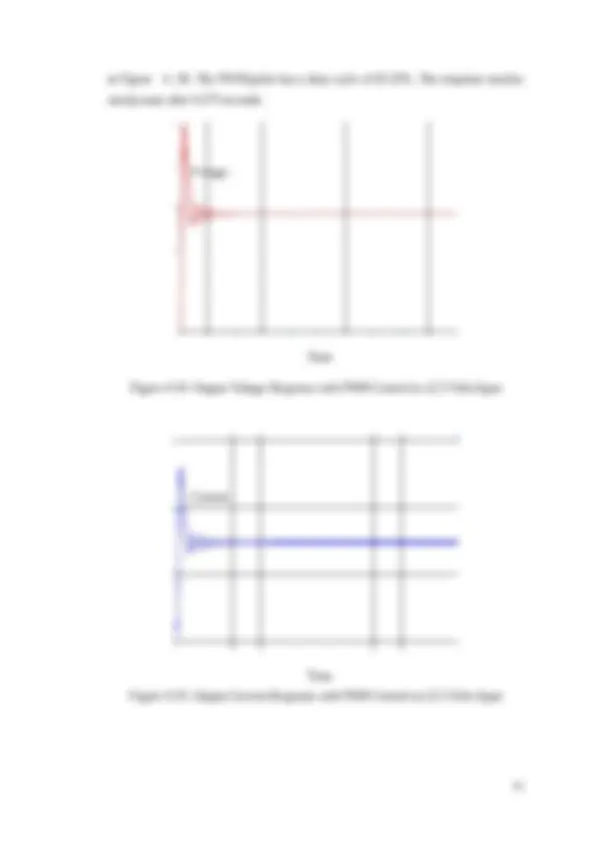
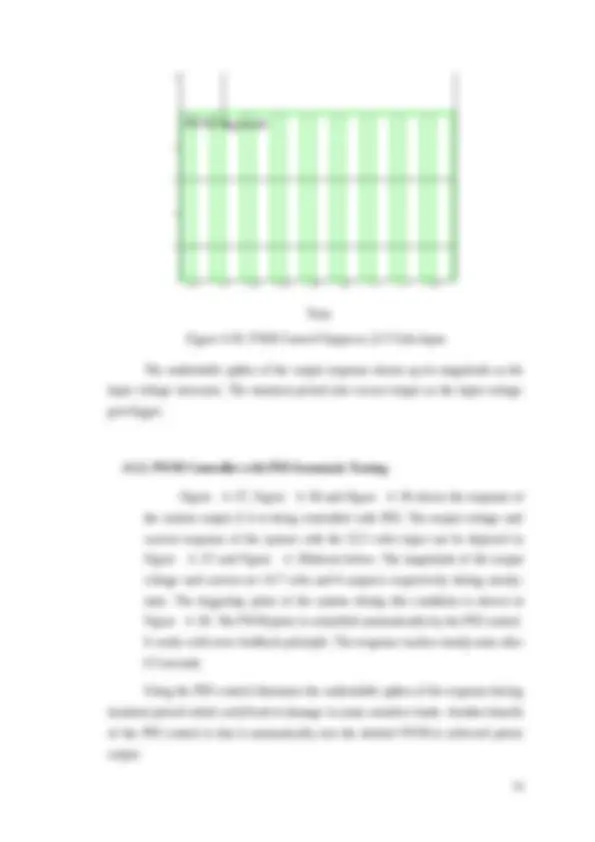
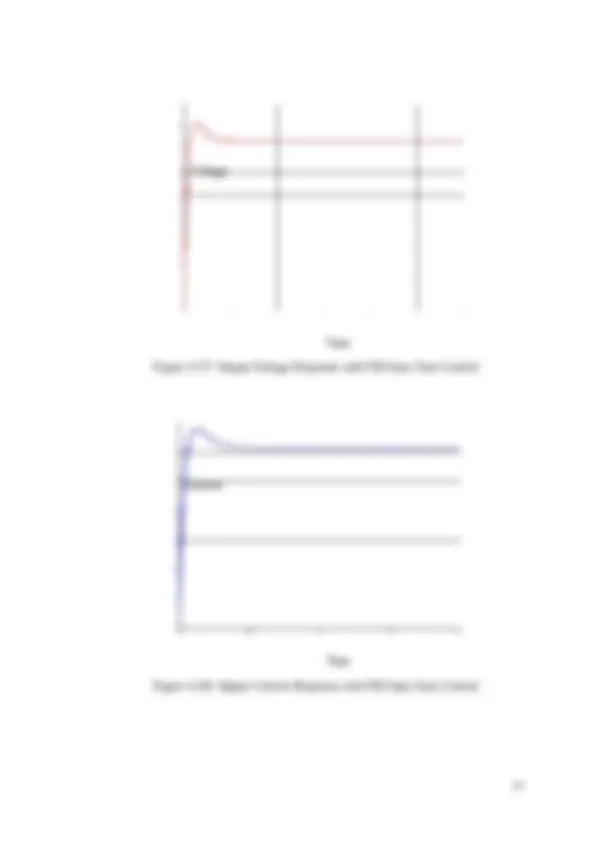
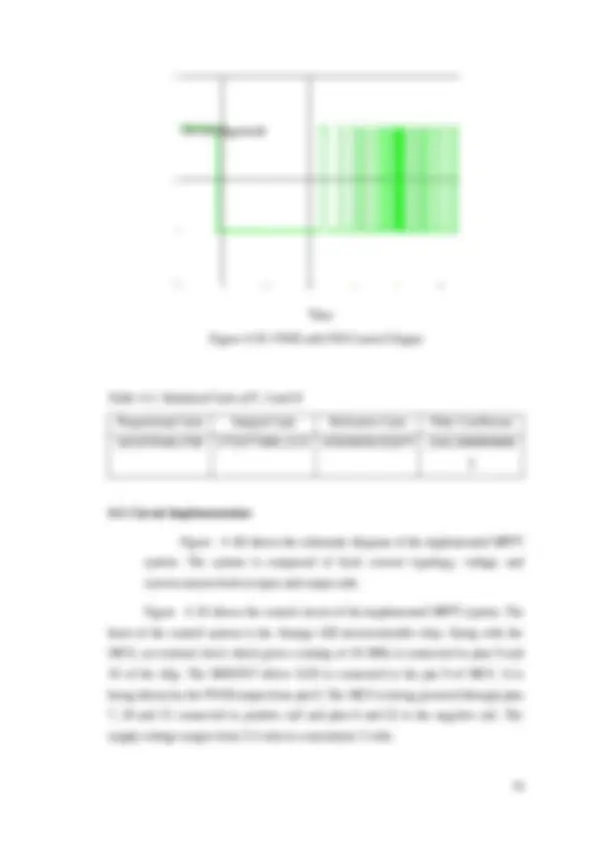
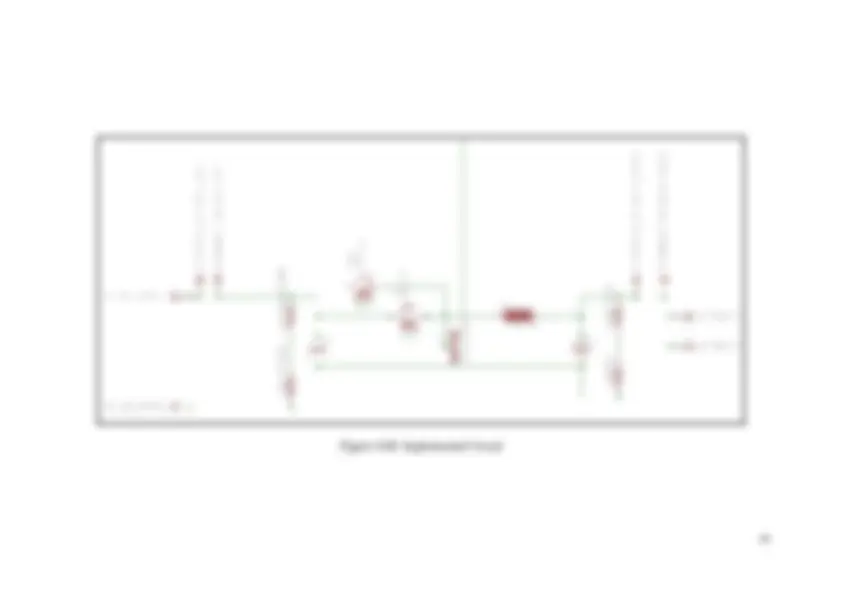
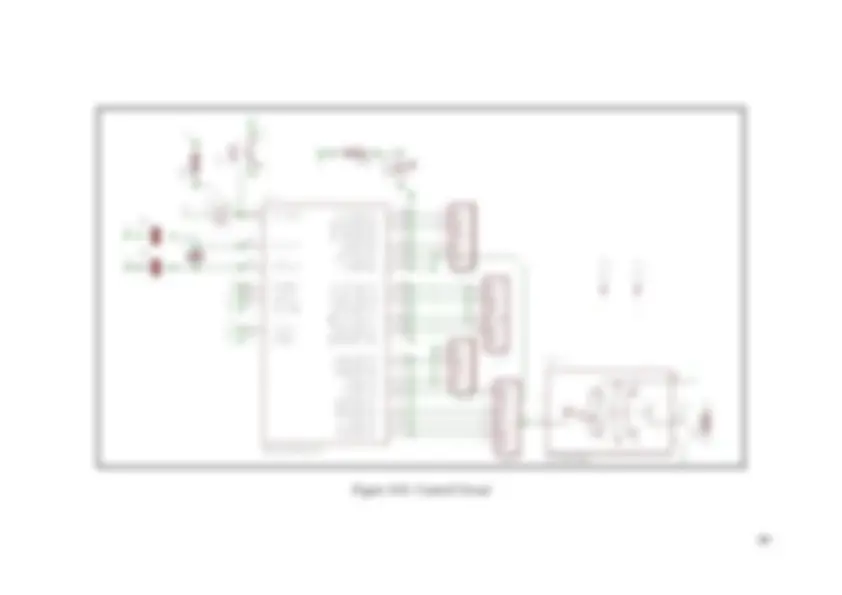

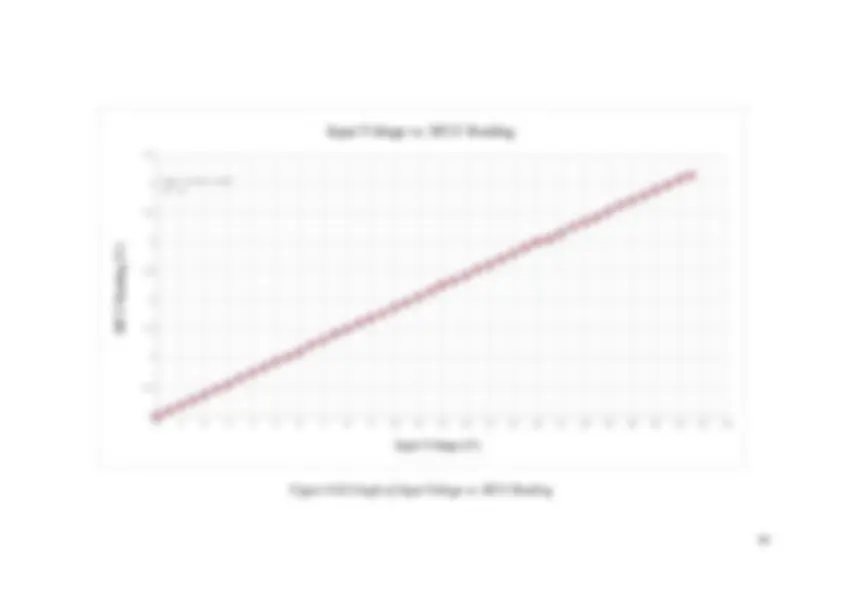
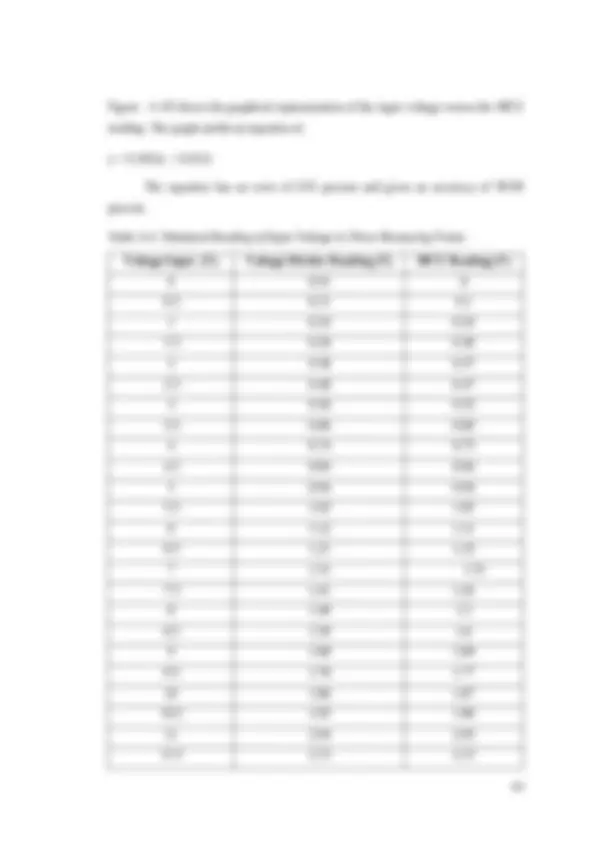
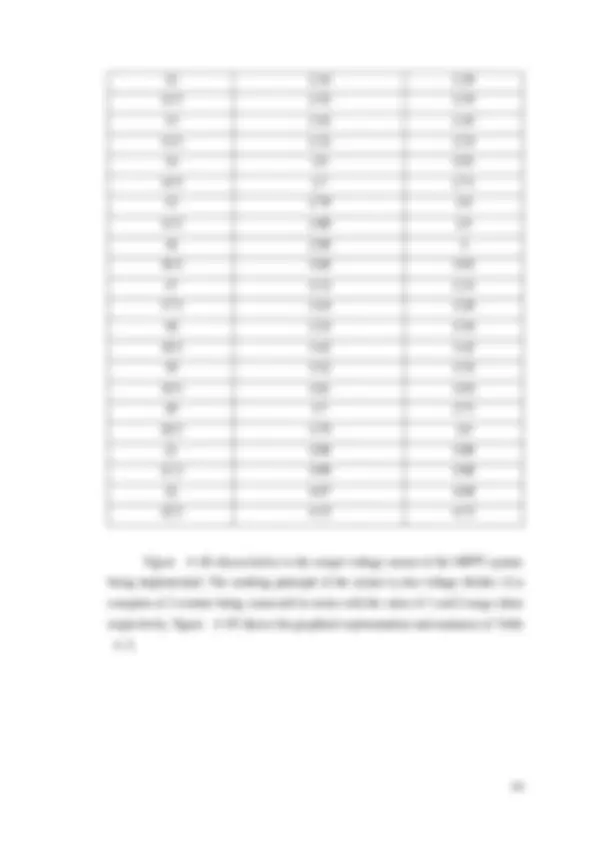

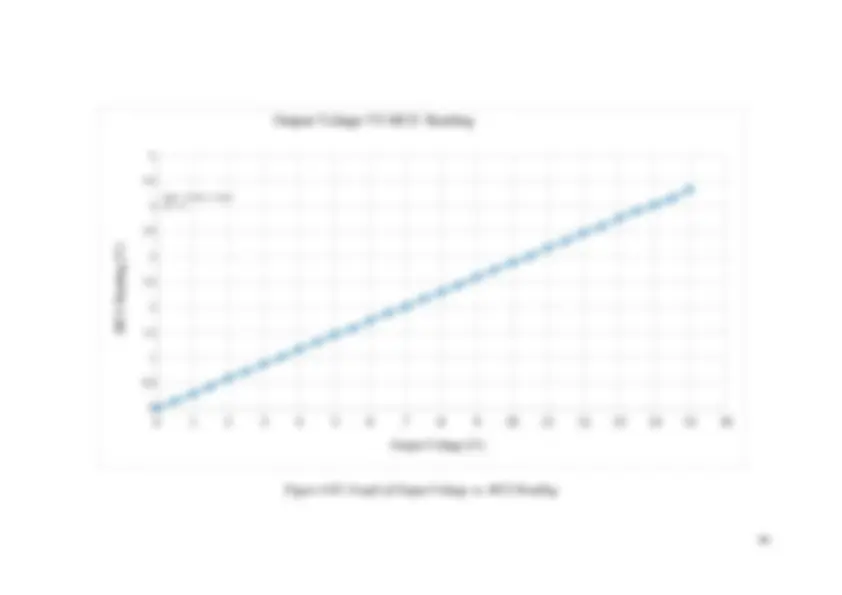

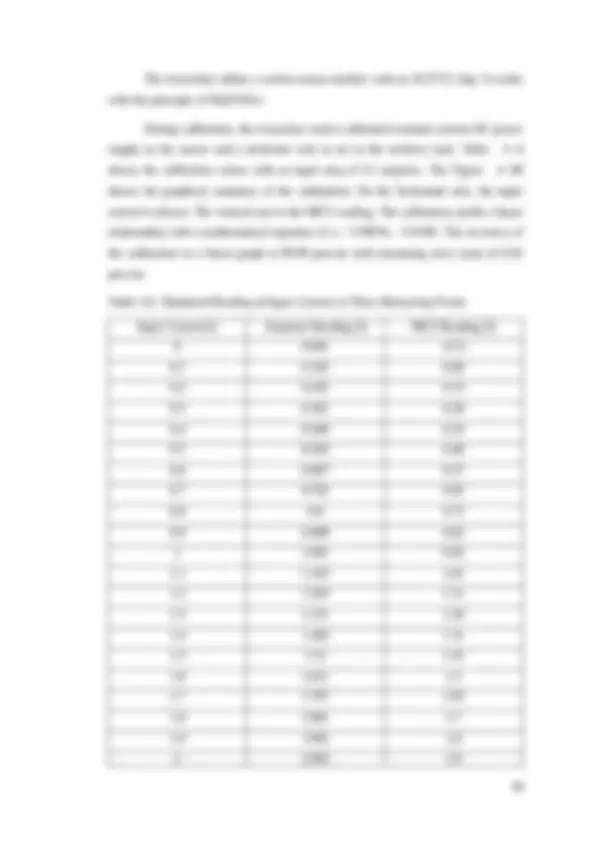


Study with the several resources on Docsity

Earn points by helping other students or get them with a premium plan


Prepare for your exams
Study with the several resources on Docsity

Earn points to download
Earn points by helping other students or get them with a premium plan
Community
Ask the community for help and clear up your study doubts
Discover the best universities in your country according to Docsity users
Free resources
Download our free guides on studying techniques, anxiety management strategies, and thesis advice from Docsity tutors
DESIGN, SIMULATION, IMPLEMENTATION AND EVALUATION OF MAXIMUM POWER POINT TRACKING SOLAR CHARGE CONTROLLER
Typology: Thesis
1 / 121

This page cannot be seen from the preview
Don't miss anything!





























































































APPROVAL SHEET......................................................................................................i ACKNOWLEDGEMENT.............................................................................................ii TABLE OF CONTENTS..............................................................................................iii LIST OF TABLES......................................................................................................viii LIST OF FIGURES......................................................................................................ix ABSTRACT.................................................................................................................xii Chapter 1........................................................................................................................ 1 INTRODUCTION...................................................................................................... 1 1.1. Overview of the Study......................................................................................... 1 1.2. Statement of the Problem.................................................................................... 2 1.3. Objective of the Study......................................................................................... 2 1.4. Significance of the Study................................................................................. 3 1.5. Scope and Limitation........................................................................................... 3 Chapter 2........................................................................................................................ 4 REVIEW OF RELATED LITERATURE.................................................................. 4 2.1. Introduction...................................................................................................... 4 2.2. History of Photovoltaic.................................................................................... 4 2.3. Photovoltaic Cell, Module and Array.............................................................. 5 2.3.1. Monocrystalline Silicon Cells................................................................... 5 2.3.2. Polycrystalline Silicon Cells..................................................................... 6 2.3.3. Thin Film Solar Cells................................................................................ 7 2.3.4. Amorphous Silicon Cells.......................................................................... 7 2.3.5. Hybrid Silicon Cells.................................................................................. 8 i
In recent years, the use of solar energy has become an alternative source of energy of great importance. Several researches and efforts have been concentrated on the improvement of the efficiency of photovoltaic systems and in the accessibility to this technology. Photovoltaic power generation system implements an effective utilization of solar energy, but has very low conversion efficiency. The major problem in solar photovoltaic (SPV) system is to maintain the DC output power from the panel as constant. Irradiation and temperature are the two factors, which will change the output power of the panel. Maximum power point tracking (MPPT) is used in photovoltaic (PV) systems to regulate the photovoltaic array output. MPPT controller typically consists of DC-DC converter with some duty cycle finding controller to maintain the output power as constant. The power can be stored in battery and then utilized for the powering the DC and AC load through inverter. This paper presents the designing, simulation, implementation and evaluation of the performance of Maximum Power Point Tracking Solar Charge Controller. DC- DC buck converter is used in controlling the charging current supplied to the battery based on the power obtained from the PV system. Simulink was utilized in simulating the system. Perturb & observe (P&O) algorithm is used to provide suitable duty cycle to the buck converter. During testing, the researcher utilizes De Lorenzo Photovoltaic Inclinable Module and the halogen lamps as artificial light source. Both equipment are part of the Mindanao University of Science and Technology Smart Grid Trainer at Renewable Energy Laboratory. The study evaluates the effect of using the designed MPPT system. x
Chapter 1 INTRODUCTION 1.1. Overview of the Study Due to the dependence of human in fossil fuel for industrial revolution for the past century, the world is facing a great problem today. The massive emission of carbon by the industries from burning fossil fuel greatly contributed to global warming. Climate change greatly affected earth’s natural processes. The Philippines is one of the most disaster-prone nations in the world, with an average of 20 typhoons hitting the country every year and the fact that it lies in the Pacific ring of fire. During disasters, it is expected that power sources from the grid will be cut out. Within 72 critical hours after the calamities, there is an immediate need for medical services, portable water, electrical service and communications. Electrical energy is never more needed than in the aftermath of disasters other than food and water [1]. Backup power and embedded generators is playing an increasing and critical role in the recovery from all manner of disasters. Stand-alone power generators are the only available resources for power problem after the disaster. Electricity from mobile power units can provide relief and are critical until utility service can come back online. Stand-alone power generators can either diesel generators or from renewable energy sources. Sometimes for higher reliability, combination of both systems is implemented. The power could be generated through solar PV, wind turbine, geothermal sources and micro hydro for renewable energy sources, and diesel generators for fossil fuel powered source. The use of diesel generators would solve the power problems during times emergency power needs. The deployment of diesel generators would temporarily elucidate the problem but will worsen the issue in climate change in the long run which is the cause of drastic natural calamities. 1
this, there is a need to develop locally made Maximum Power Point tracking solar charge controller for small scale application of stand-alone PV system. 1.3. Objective of the Study The study performs designing and evaluation of maximum power point (MPP) tracking portable solar charge controller and aims the following: To design a MPP tracking solar charge controller as part of alternative renewable electrical energy source. To simulate the charge controller for design verification. To implement the designed MPP tracking solar charge controller. To evaluate the performance of MPP tracking solar charge controller as part of alternative renewable electrical energy source. 1.4. Significance of the Study The advent effect of burning of fossil fuel for energy demand are being experience during and after natural calamities. During emergencies such as disasters, there is an immediate need for medical services, portable water, electrical service and communications. Electricity is never more needed than in the aftermath of tragedies. The success of this study is significant in maximizing the use of PV modules. The capacity of the drawn power will be increased with some percentage. The implementation of the project will help with aiding the small-scale user of solar power. 1.5. Scope and Limitation The scope of the study includes the designing of MPP tracking portable solar charge controller and simulation using Simulink software of MATLAB. The study limits to the utilization of single solar panel rated 100 watts and a battery as load. The power conversion from direct to alternating current is excluded and beyond in the study. 3
Chapter 2 REVIEW OF RELATED LITERATURE 2.1. Introduction In recent years, an increasing concern of environmental issues of emissions, in particular global warming and the limitations of energy resources has resulted in extensive research into novel technologies of generating electrical power. As people are much concerned with the fossil fuel exhaustion and the environmental problems caused by the conventional power generation, renewable energy sources and among them photovoltaic panels and wind-generators are now widely used [4]. The popular among the renewable energy sources is the solar energy. Solar energy is utilized by standalone photovoltaic PV system [5]. 2.2. History of Photovoltaic The first conventional photovoltaic cells were produced in the late 1950s, and throughout the 1960s were principally used to provide electrical power for earth- orbiting satellites. In the 1970s, improvements in manufacturing, performance and quality of PV modules helped to reduce costs and opened up a number of opportunities for powering remote terrestrial applications, including battery charging for navigational aids, signals, telecommunications equipment and other critical, low- power needs. In the 1980s, photovoltaics became a popular power source for consumer electronic devices, including calculators, watches, radios, lanterns and other small battery-charging applications. Following the energy crises of the 1970s, significant efforts also began to develop PV power systems for residential and commercial uses, both for stand-alone, remote power as well as for utility-connected applications. During the same period, international applications for PV systems to power rural health clinics, refrigeration, water pumping, telecommunications, and off-grid households increased dramatically, and remain a major portion of the present world market for PV products. Today, the industry’s production of PV modules is growing at approximately 25 percent annually, and major programs in the U.S., Japan and 4
cells because the cells are sliced from large single crystals that have been painstakingly grown under carefully controlled conditions. Typically, the cells are a few inches across, and a number of cells are laid out in a grid to create a panel. Figure 2 - 2. Monocrystalline Solar Panel Relative to the other types of cells, they have a higher efficiency (up to 24.2%), meaning you will obtain more electricity from a given area of panel. This is useful if you only have a limited area for mounting your panels, or want to keep the installation small for aesthetic reasons. However, growing large crystals of pure silicon is a difficult and very energy-intensive process, so the production costs for this type of panel have historically are the highest of all the solar panel types. Production methods have improved though, and prices for raw silicon as well as to build panels from monocrystalline solar cells have fallen a great deal over the years, partly driven by competition as other types of panel have been produced. 2.3.2. Polycrystalline Silicon Cells It is cheaper to produce silicon wafers in molds from multiple silicon crystals rather than from a single crystal as the conditions for growth do not need to be as tightly controlled. In this form, a number of interlocking silicon crystals grow together. Panels based on these cells are cheaper per unit area than monocrystalline panels - but they are also slightly less efficient (up to 19.3%). 6
2.3.3. Thin Film Solar Cells The thin-film PV cell, a thin semiconductor layer of photovoltaic materials is deposited on low-cost supporting layer such as glass, metal or plastic foil. Since thin- film materials have higher light absorptive than crystalline materials. The deposited layer of PV materials is extremely thin from a few micrometers to even less than a micrometer (a single amorphous cell can be as thin as 0.3 micrometers). Figure 2 - 4. Thin Film Solar Cell Thinner layers of material yield significant cost saving. Constituting about 10% of total PV module shipments; the PV industry sees great potentials of thin-film technology to achieve low-cost PV electricity. 2.3.4. Amorphous Silicon Cells Amorphous (or 'thin film') solar modules have recently become very popular in the Australian market. They offer better performance in higher temperatures, and have some benefits in shady locations. However, the benefits have been greatly 7
AC Loads Electric Utility PV Array Inverter/Power Conditioner Distribution Panel
Grid-connected or utility-interactive PV systems are designed to operate in parallel with and interconnected with the electric utility grid. The primary component in grid-connected PV systems is the inverter, or power conditioning unit (PCU). The PCU converts the DC power produced by the PV array into AC power consistent with the voltage and power quality requirements of the utility grid, and automatically stops supplying power to the grid when the utility grid is not energized. A bi-directional interface is made between the PV system AC output circuits and the electric utility network, typically at an on-site distribution panel or service entrance. This allows the AC power produced by the PV system to either supply on-site electrical loads, or to back-feed the grid when the PV system output is greater than the on-site load demand. At night and during other periods when the electrical loads are greater than the PV system output, the balance of power required by the loads is received from the electric utility This safety feature is required in all grid-connected PV systems, and ensures that the PV system will not continue to operate and feed back into the utility grid when the grid is down for service or repair. Grid-connected systems must also meet utility requirements. For example, inverters must not emit noise that can interfere with equipment reception. Inverters must also switch off in cases of grid failure. Finally, they must retain acceptable levels of harmonic distortion, such as voltage quality and current output waveforms. Grid-connected systems can be applied to residential houses and in large building. Figure 2 - 6. Grid-Connected Photovoltaic System Diagram 9
Stand-alone PV systems are designed to operate independent of the electric utility grid, and are generally designed and sized to supply certain DC and/or AC electrical loads. These types of systems may be powered by a PV array only, or may use wind, an engine-generator or utility power as an auxiliary power source in what is called a PV-hybrid system. The simplest type of stand-alone PV system is a direct- coupled system, where the DC output of a PV module or array is directly connected to a DC load. Since there is no electrical energy storage (batteries) in direct-coupled systems, the load only operates during sunlight hours, making these designs suitable for common applications such as ventilation fans, water pumps, and small circulation pumps for solar thermal water heating systems. Matching the impedance of the electrical load to the maximum power output of the PV array is a critical part of designing well-performing direct-coupled system. For certain loads such as positive- displacement water pumps, a type of electronic DC-DC converter, called a maximum power point tracker (MPPT), and is used between the array and load to help better utilize the available array maximum power output. 2.5. Solar Cell Operating Principle PV cells convert sunlight directly into electricity without creating any air or water pollution. PV cells are made of at least two layers of semiconductor material. Photons in sunlight hit the solar panel and are absorbed by semiconducting materials, such as silicon. Electrons (negatively charged) are knocked loose from their atoms, allowing them to flow through the material to produce electricity. Due to the special composition of solar cells, the electrons are only allowed to move in a single direction. The complementary positive charges that are also created (like bubbles) are called holes and flow in the direction opposite of the electrons in a silicon solar panel. An array of solar cells converts solar energy into a usable amount of direct (DC) electricity. When a photons hits a piece of silicon, one of three things can happen: The photon can pass straight through the silicon — this (generally) happens for lower energy photon. The photon can reflect off the surface, 10